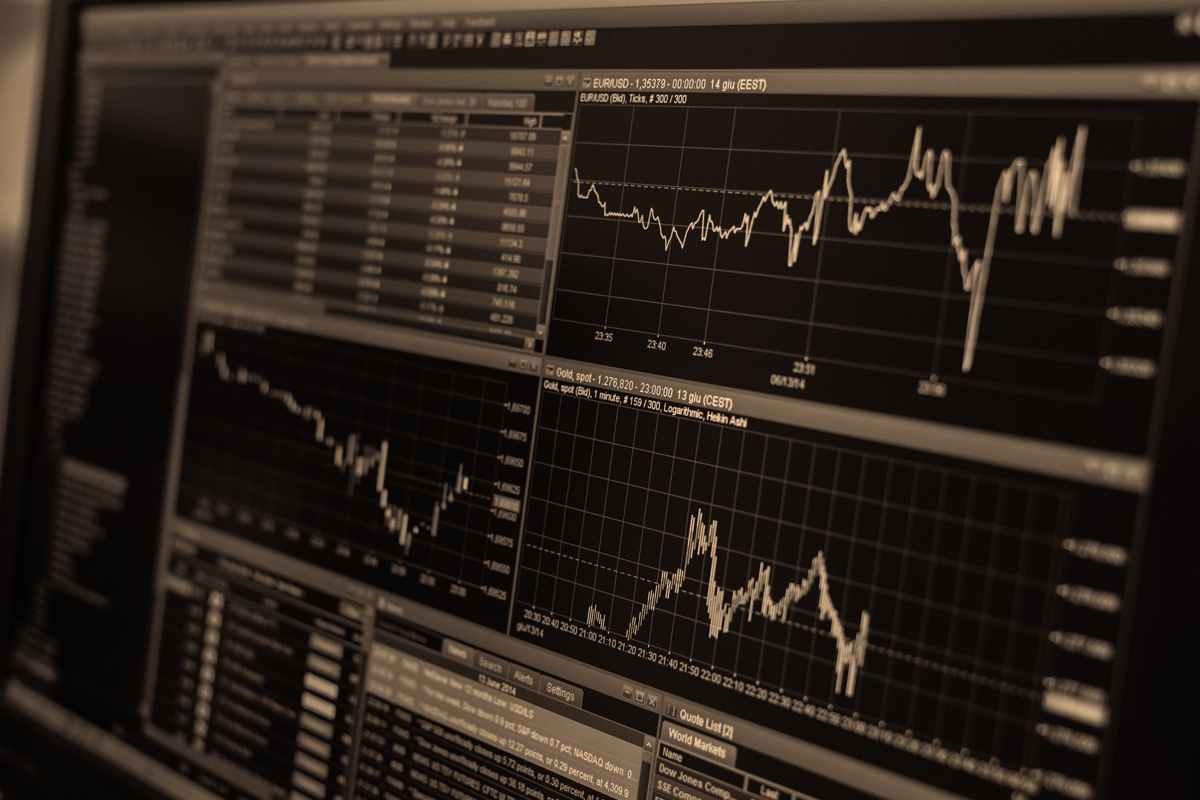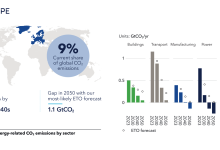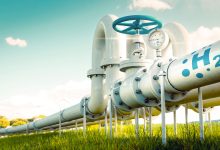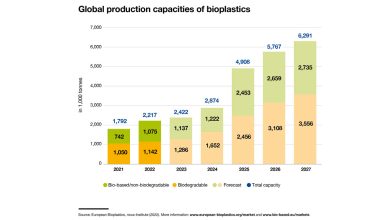A good year for oil & gas sector on BSE
Proving once again one of the pillars of the Romanian capital market, the oil and gas industry had a positive evolution in 2017, despite problems faced in the first two quarters of the year. With financial results growing in the first 9 months compared to the same period of 2016 and with increases in share prices, companies in the oil and gas sector on the Bucharest Stock Exchange (BSE) had, overall, a significantly better evolution (shown by the BET-NG stock index) than the general evolution of the profile companies representative at regional, European and international level, as shown by the reference stock indices.
In the first half of 2017, the oil and gas sector on BSE was pushed up by the dividend prospects, especially in terms of distribution of additional dividends. The paradigm has changed with the second half of the year, after the reference dates for dividends had passed, when the energy sector as a whole (reflected by BET-NG) corrected accordingly and fell into a downward trend, a trend accentuated towards the end of the year. That despite the relatively good evolutions recorded in the third quarter of the year, in terms of financial results, by most of the companies included in the index.
BET-NG, benchmark for oil & gas
BET-NG index reflects the overall evolution of energy companies listed on BSE, including both companies in the oil & gas sector and companies from the power sector. The index is dominated however, at a rate of over 75%, by oil and gas companies, the remaining of less than 25% of the share in the total index being electricity companies. Therefore, BET-NG can be considered an indicator relevant enough to show the overall evolution on the stock exchange of the oil and gas industry; especially that two of the three companies in the electricity sector in its structure have negatively affected its evolution, in terms of both price (the shares in Electrica and Transelectrica falling by around 15% and 10% respectively in 2017) and fundamental analysis (the same two companies recorded declines more than significant in profits in the first 9 months of 2017 vs. the same period of 2016). Therefore, BET-NG, as a relevant indicator for the overall evolution of the oil and gas industry listed on the Bucharest Stock Exchange, is, close to the end of 2017, around 650 points, registering an increase just over 10% compared to the value recorded at the end of 2016.
The energy index thus marks a better evolution than that of SNP Petrom – company with a share of over 30% in the BET-NG index (influencing its evolution proportionally) and which in the same period recorded an increase by slightly over 7% – but weaker than that of most of the other companies in its structure (see the table ‘Structure and evolution – BET-NG’).
Thus, Romgaz, which has a share of over 25% in BET-NG, marked close to the end of 2017 an increase in its share prices by over 26% throughout 2017. At the same time, Transgaz, which has a share of almost 16% in the BET-NG index, recorded an increase in the share price by over 30%. And Conpet (COTE), with a share of only 3% in the index, increased by over 26%. However, the leader of growths is Oil Terminal (OIL), which although accounts for only 0.19% of the BET-NG index, had in mid-December 2017 an increase in its share prices by over 60% compared to the value at the end of the previous year (see the table ‘Structure and evolution – BET-NG’). An increase in the market price that seems to be separated from the fundamentals, in conditions in which the financial results for the first 9 months of the year show a decrease by almost 25% in the net profit reported by the company; from RON 15.3mln (in 9 months/2016) to RON 11.5mln (in 9 months/2017) – a decline that took place despite a slight increase in turnover (from RON 117mln to RON 121mln), amid lower amounts of freight traffic and higher expenditure (see the table ‘OIL, plunging profit, growing share price’). The company recorded in the first 9 months of 2017 an increase in expenses in almost all the budget chapters – from those with the staff (most of the expenses, which increased from RON 47mln to RON 53mln) to expenses with services executed by third parties (from RON 8.8mln to RON 12.3mln) or other operating expenses (from RON 25.9mln to RON 33.5mln).
Growth leader
Oil Terminal Constanta, with a storage capacity of around 1.5 million cubic meters, is the largest operator in the port of Constanta, specializing in handling oil, petroleum products, liquid petrochemical products and other finished products or liquid raw material for import, export and transit. The company represents a strategic point in the Black Sea area, the oil terminal in Constanta being one of the largest of this type in South-Eastern Europe, also being at the crossroads of shipping corridors between Asia, Central and Western Europe and the Middle East. Oil Terminal S.A. is interconnected with the Romanian refineries through the transmission operator Conpet S.A. Ploiesti, for the transport of crude oil from the terminal to refineries, via underground pipelines part of the national transmission system. The oil terminal has links to the national railway network, to the road network and the Danube – Black Sea Canal.
However, despite all these strengths, which give it an extraordinary business potential, the company continues to maintain in the lower league of profile players, delaying in producing financial results to the extent of its size and importance.
Biggest decline
At the opposite side, with a decline by around 7% in the market price in mid-December 2017 compared to the value at the end of the previous year, is Rompetrol Rafinare Constanta (RRC), company which, paradoxically, unlike Oil Terminal, recorded an increase in both turnover and profits in the first 9 months of 2017 vs. 9 months 2016. Thus, RRC reported for 9m/2017 a turnover of USD 2.8bn (i.e. RON 11.2bn), up 11% compared year-on-year, and a profit of USD 56.1mln (RON 218.7mln), surging by 168% compared to the first 9 months of 2016 (see the chart ‘RRC, growing turnover and profits, declining share prices’).
Rompetrol results were boosted especially by the achievements in the last quarter of the reporting period, i.e. Q3/2017, when the company posted a gross turnover in the refining segment of USD 941mln (of the total of USD 2.4bn achieved overall in the 9 reporting months), climbing by 45% compared to the same period of 2016, the turnover being especially influenced by an increase in international quotations for petroleum products. Thus, the oil price in Q3/2017 reached a maximum of USD 59/bbl due to a higher demand on the global market and cutting the output of OPEC member states. Hurricane Harvey in the United States also had a positive effect on the financial results of RRC, also resulting in the interruption of activity of several refineries in the U.S., leading to an increase in prices for refined products at global level.
Overall, the third quarter of the year was characterized by a context that allowed high refining margins; the refining margin improved in Q3/2017, amounting to USD 63.9/ton, with a significant increase from the level of USD 31/ton in Q3/2016. The increase in margins was also doubled by the higher volumes of raw material processed; in August 2017, Petromidia refinery reached historical thresholds from this point of view, reaching the level of 540 thousand tons (the equivalent of 17.4 thousand tons/day). In parallel, Vega refinery processed around 263 thousand tons of raw material in the first 9 months of the year, of which 111.6 thousand tons only in the third quarter – by 31.9% more than it had processed in the same quarter of 2016.
SNP, spectacular growth in q3
The financial results of RRC were thus positively influenced especially in Q3, when the cumulative external and internal factors (the latter taking into account the continuation of the activity efficiency process) led to a spectacular jump in the figures. The same is also visible in the financial reports of OMV Petrom, which posted an EBIT of RON 2.7bn during January – September 2017, and from this amount over RON 1bn was obtained only in Q3 (see the table ‘SNP, positive evolutions on all levels’).
As RRC, OMV Petrom also benefited from the higher oil prices in the last quarter of the year and the increased refining margins; a significant contribution was brought, as in RRC case, by the efficiency of activity and a better cost control.
On sectors, in the Upstream segment it was managed to decrease the unit costs of production, which offset the decline of production – in conditions in which OMV Petrom reported declines in production on all the categories of products (see the table ‘SNP, production declines’). In Romania, the daily hydrocarbon production was 159.2 thousand boe/day and the total production was 14.65 million boe. Gas production fell by 3%, to 8.41 million boe, due to the natural decline of the main fields – decline partially offset by the execution of workovers. On the other hand, production costs were by 8% lower than in Q3/2016, especially as a result of eliminating the tax on special constructions, as well as following the reduction of other cost categories.
In parallel, in the Downstream segment, the plus was generated by a significant growth of sales, inter alia also amid higher prices. In the first 9 months of 2017, OMV Petrom reported sales of RON 14.3mln (up 20% vs. 9m/2016) and a net profit of just over RON 2bn (up 128% vs. the amount of RON 899mln reported in 9m/2016) – the refining margin increasing in Q3/2017 to USD 8.75/bbl, especially as a result of higher prices of diesel and kerosene. And total sales of refined products went up 7% versus Q3/2016, also supported by the sales of complementary products.
TGN, growing profit
Q3/2017 has thus proven to be a ‘saviour’ for the figures reported in the first 9 months for OMV Petrom as well. However, it wasn’t equally good for Transgaz – company which in the last three months of the reporting period posted a decline by around 10% in income and 57% in profit. Specifically, Transgaz posted in Q3/2017 a profit of only RON 33mln (compared to RON 76.7mln in Q3/2016), at an income of RON 321.9mln (compared to income of RON 370mln in Q3/2016). It is true however that the poor results in the last reporting quarter were offset by those obtained in the first half of the year, so that, overall for the 9 months, Transgaz reported an income of over RON 1.3bn (increasing by 5% compared to those reported in the first 9 months of 2016) and a net profit of RON 433.5mln (by 21% higher than that reported in the first 9 months of 2016) (see the table ‘TGN, growing profit’).
Increase in the income from the operating activity was influenced by several factors, but the higher volumes of gas transported is the first of them; in the first 9 months of the year, TGN transported 99 million MWh of natural gas (or 9.22 billion cubic meters), amounts significantly higher than those transported in the same period of 2016 (see the table ‘TGN, growing volumes’). Beyond the positive impact brought by the higher amount of gas transported, the income was directly influenced by the growing income obtained from the reservation of capacity, by RON 56.3mln; this positive effect took place amid a rise in the reservation tariff by RON 0.72/MWh. But on the other hand, TGN reserved lower capacities, which partially offset the positive effect brought by the increase in tariff. Last but not least, a significant contribution also belonged to the higher income from the international gas transmission (plus RON 11.9mln y/y), following the favourable variation of exchange rates (RON depreciation).
On the other hand, the company reduced its expenses, diminishing, for example, its consumption and technological losses – activity from which it recorded savings of RON 13.6mln; other RON 24.9mln were saved by cutting costs with risks and expenses and other RON 10.3mln by cutting other operating expenses.
SNG, relatively balanced evolution
SNGN Romgaz (SNG) – company which, in mid-December 2017, before the end of the year, marked an increase in the price by around 26% compared to the value recorded at the end of last year, had a relatively balanced evolution in terms of correlation between the dynamics of the market price of the shares and the dynamics of financial results. In the case of this company, the third quarter of the year also had a major contribution.
From a fundamental point of view, the company reported for the first 9 months of the year an income of RON 3.24bn (rising by 35% compared to the income posted in the same period of 2016) and a profit of RON 1.18bn (by 65.9% higher than that reported in the first 9 months of 2016) (see the table ‘Growing turnover and profit for Romgaz’). In Q3/2017 however the company reported a profit of RON 316mln, climbing by 221% compared to Q3/2016, when the reported profit was only RON 98.4mln.
In short, after a fall in national gas consumption by about 4.6% in 2015 and a moderate increase of about 1.9% in 2016, in 2017 – especially in the third quarter of the year, there was a revival thereof; consumption has thus soared in the reporting period by about 12%, from 79.5 TWh in the first nine months of 2016 to 89.04 TWh in the first nine months of 2017. Against the backdrop of rising gas consumption at national level, Romgaz was able to increase deliveries by 34.68% over the same period of 2016, from 31.86TWh to 42.91TWh. As a result, Romgaz’s market share in the gas supply market in Romania reached 48.19%, being 8.12% higher than the share held in the previous period (40.08%).
Romgaz’s natural gas production was 3,751 million cubic meters, by 717 million cubic meters higher than the production achieved in the same period of the previous year (+23.6 percent) and by 263 million cubic meters higher than budgeted (+7.6 percent) (see the table ‘Higher production at Romgaz’). At the same time, electricity production increased by 2.5% compared to the similar period of 2016, from 902.0TWh to 1,465.5TWh, Romgaz thus reaching a market share of 3.14%.
It should be noted that Romgaz has positioned itself well on the upward trend of gas consumption registered at European level. Thus, the latest European statistics, available for the end of the second quarter of 2017, brought for the EU gas market the sixth consecutive quarter of growth in demand (consumption), Eurostat’s preliminary data showing an increase of 11% y/y in Q2 2017 (as compared to Q2 2016). Therefore, according to the ‘Quarterly Report on European Gas Markets (issue 2, second quarter of 2017)’, published at the end of September 2017, added to the 162 billion cubic meters of natural gas consumed in the EU in the first quarter (a new peak in consumption from the first quarter of 2013 to date) are about 100 billion cubic meters consumed in the second quarter, resulting in a consumption of about 260 billion cubic meters over the first six months of 2017. Confirmation of provisional figures for the second quarter would make the first half of 2017 to mark an increase in consumption of about 8% over the same period of 2016.
By demonstrating that it has the ability to use this trend (as the 9m financial results show), Romgaz seems to have positioned itself appropriately, creating the premises for achieving good results for the full year, and growth for 2018.
Declining income, growing profit
This is how one can characterize, very briefly, the evolution of Conpet (COTE) – the national crude oil and derivates carrier via pipelines. In the 9-month period ending 30 September 2017, the company posted a turnover of RON 282.51mln, down 0.1% compared to the turnover achieved in the first 9 months of 2016 (RON 282.84mln) (see the table ‘Financial results COTE’); the operating income recorded a slight increase (0.9%), from RON 305.43mln in 2016 to RON 308.14mln in 2017, and the EBIT increased by 10.9%, from a value of RON 65.21mln in the first 9 months of 2016 to RON 72.31mln in 2017. Therefore, in the 9-month period ending 30 September 2017, Conpet reported a net profit of RON 63.11mln, higher by RON 6.37mln (11%) than in the first 9 months of 2016 (RON 56.74mln).
The total quantity transported during January – September 2017 was by 225,000 tons lower than in the same period of 2016, as a result of lower demand for the service of transport to refineries. On the country transmission subsystem, the transported quantity decreased by 113 thousand tons (4.1%) and on the import transmission subsystem there was a decrease by 112 thousand tons (see the table ‘Lower activity, but higher profit at COTE’). The decrease in the total income from transmission, related to the period January – September 2017, with the amount of RON 2.52mln (0.9%), compared to the same period of 2016, was mainly generated by the closure of Lukoil Ploiesti refinery for 40 days for technological overhaul. The transmission activity accounts for 99% of total turnover, and income from oil, gasoline and condensate transmission services hold a share of 90.5% in total operating income.
Performance in romania
Therefore, despite serious difficulties faced in the first half of the year, the oil and gas industry managed however to perform better than last year; both in terms of market price evolution and as far as the financial results are concerned. Thus, for the overall industry, the sum of income recorded in the first 9 months by the oil and gas companies listed on the Bucharest Stock Exchange (and which are included in the BET-NG index) was RON 30.5bn, while the sum of profits was RON 3.76bn (see the table ‘Growing results’), the values being significantly higher than those achieved in the same interval of 2016, when the sales totalled only RON 26bn and the profits barely exceeded the level of RON 2.1bn.
These are the elements that have boosted the good evolution of the BET-NG index; it was pulled up by the oil and gas companies, which over-compensated the negative influence of electricity companies, so that throughout the year 2017 it posted a better dynamic than the indices of the oil and gas sector at regional (CEE), European and international level.
Thus, while the BET-NG index managed an increase by about 10% in 2017, the STOXX Eastern Europe 300 Oil & Gas index (which tracks the overall evolution of the most representative companies in Central and Eastern Europe) marked, at the same date, a minus of about 5%. At the same time, STOXX Global 1800 Oil & Gas (which tracks the overall evolution of the most important Western oil and gas companies) was in mid-December on a slight decline (about 1%) and the STOXX Europe 600 Oil & Gas index had a plus, also very small (about 1%).
Outlook
The end of the year thus came as an additional confirmation of the fact that, despite an extremely difficult environment, the oil and gas industry in Romania is in full process of recovery, being supported on the one hand by the recovery of oil prices in the international market and on the other hand by an increasingly solid domestic demand. And this determines us to assume, in a relatively neutral scenario – which excludes the occurrence of exceptional events – that there are prerequisites for the continuation of the trend throughout 2018. And if fundamentally things already show that the industry has been firmly on the upward trend, it is likely that the share prices of the companies involved will have a relatively similar course. At least at a general level, because each of the monitored companies is very likely to evolve according to their individual differences.







